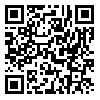Volume 56, Issue 6 (9 1998)
Tehran Univ Med J 1998, 56(6): 32-38 |
Back to browse issues page
Download citation:
BibTeX | RIS | EndNote | Medlars | ProCite | Reference Manager | RefWorks
Send citation to:



BibTeX | RIS | EndNote | Medlars | ProCite | Reference Manager | RefWorks
Send citation to:
Ghaffarpoor M, Harirchian M, Naderi N. Epidemiology, etiology and study of clinical findings of headache. Tehran Univ Med J 1998; 56 (6) :32-38
URL: http://tumj.tums.ac.ir/article-1-1503-en.html
URL: http://tumj.tums.ac.ir/article-1-1503-en.html
Abstract: (8371 Views)
In a cross-sectional epidemiological study of headache disorders in neurology clinic of Fatemieh hospital of Semnan (August 22-November 20.1996), information on types of headaches, quality, severity, location, duration, frequency, precipitating factors, age of onset, influence of menstruation and pregnancy, positive familial history, use of oral contraceptive pills and other epidemiological factors including socioeconomic and age/sex composition was collected. The presence of any types of headaches was ascertained by a clinical interview and examination using the operational diagnostic criteria of the International Headaches Society. The prevalence of migraine and tension type headache was also analysed in relation to variables of life style (physical activity and sleep pattern) and associated signs and symptoms (nausea, vomiting, photophobia and phonophobia). In this study migraine and tension headache were also compared in variable aspects with each other. 1) Headache was more prevalent in women than men (F/M=3/1). 2) The most common types of headache included: tension type headache (41.4%), migraine (31.2%) and unclassified headaches (17.2%). 3) Migraine and T.T.H were more prevalent in early adult life and middle ages. 4) In both migraine and tension type headache the time profiles (duration, frequency, age of onset), quality and location were like that noted in textbook and previous studies. 5) In both migraine and tension type headache the most conspicuous precipitating factor was stress and mental tension and frequent headaches were accompanied with psychiatric problems (e.g depression and or anxiety). 6) Nausea, vomiting, phonophobia and photophobia were the most common associated symptoms in both of them. 7) Positive familial history and aggravation of headache in perimenstual period were more commonly seen in patients with migraine than tension type headache. In conclusion using the operational diagnostic criteria of International Headache Society in clinical practice, treating, teaching, clinical and epidemiological research is very useful and must also be applied for Iranian patients.
Keywords: Tension headache
| Rights and permissions | |
 |
This work is licensed under a Creative Commons Attribution-NonCommercial 4.0 International License. |





